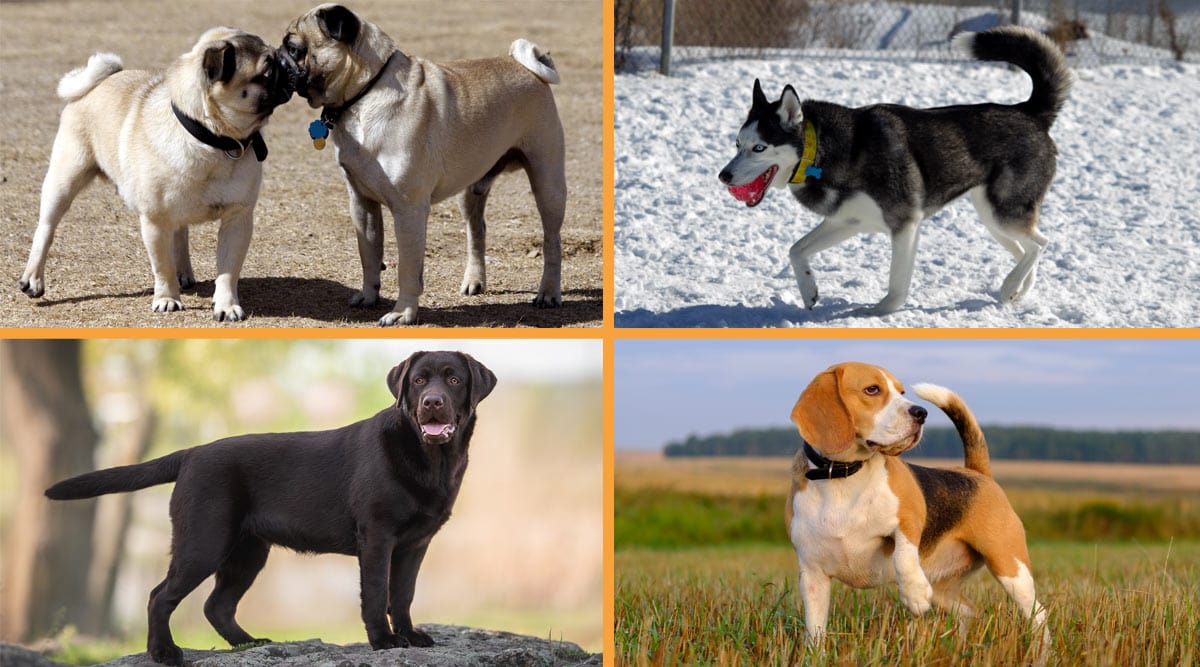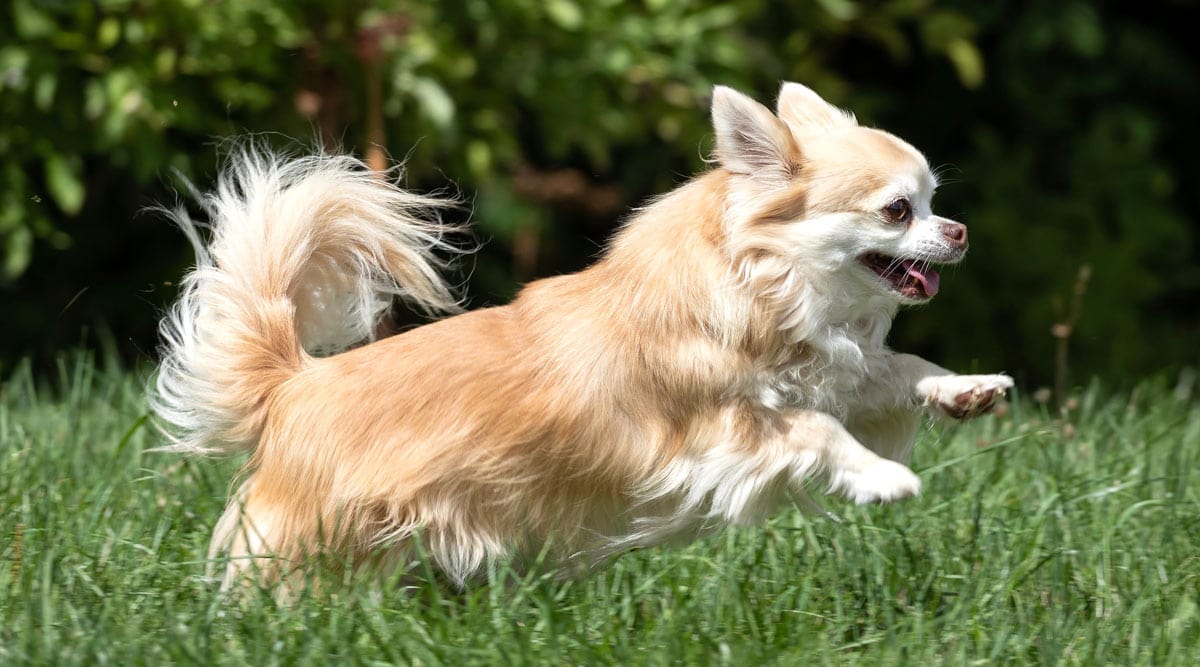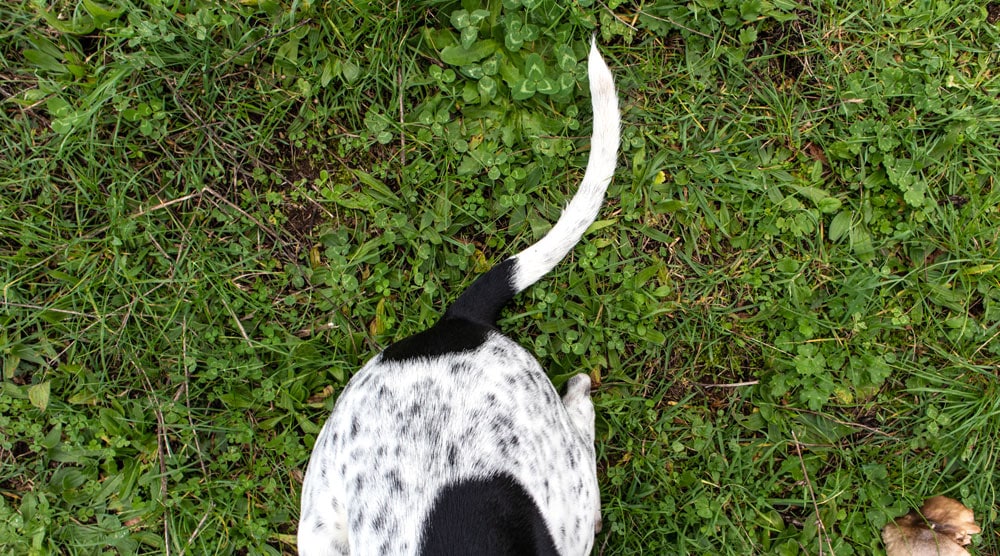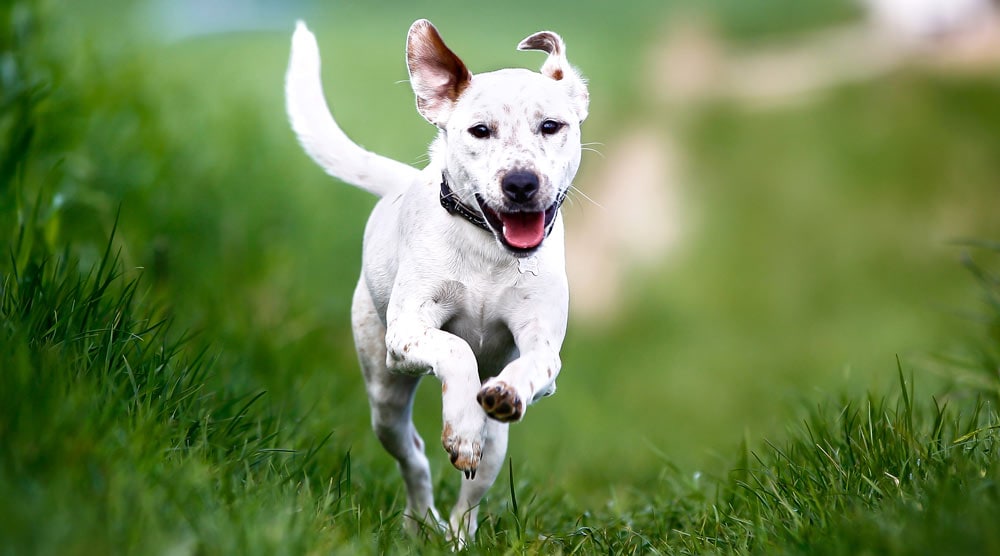There are many types of dog tails. Depending on the dog’s breed and genetics, these range from tightly-wound corkscrews to furry sickle tails.
Here’s an overview of eight of the most common types of dog tail. We’ve also included a section on why we think docked tails are unethical and should be banned, unless there is a medical reason for the procedure.
Contents
8 Common Types of Dog Tails
Corkscrew or Curled
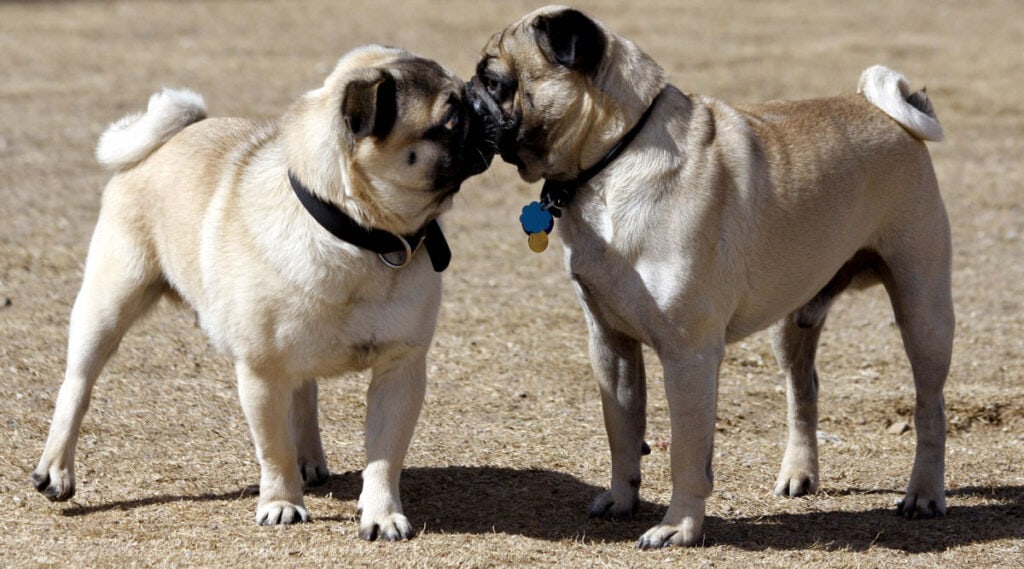
Corkscrew tails are amongst the most recognisable, as they curl into a spiral pattern on the dog’s rear end. The tightly wound pattern can make the tail look very short, although they are often longer than you would think!
While the terms corkscrew or curled are often used interchangeably, technically a corkscrew tail must be long enough to complete more than one full circle.
Examples of breeds with a corkscrew or curled tail:
- Pugs
- Bulldogs
- Basenjis
Bobbed
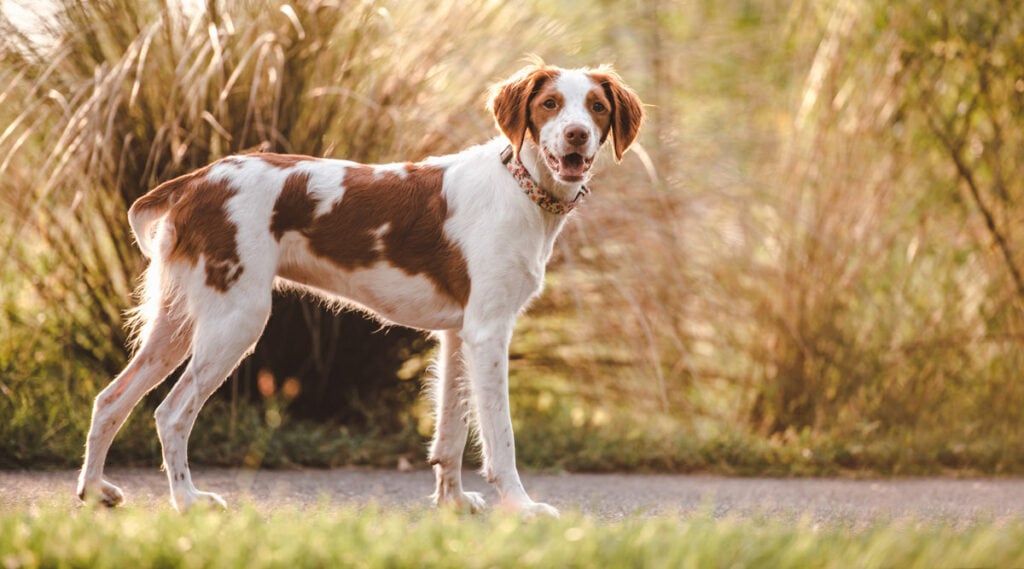
Some dogs have a naturally short, stumpy tail. In these dog, a mutated gene causes the tail to develop as a fatty tissue nub, rather than a regular tail.
Keep in mind that not all dogs of a certain breed will have bobtails. For example, some Pembroke Welsh Corgis are born with a natural bobtail, while others have a full-length tail.
A bobtail is not the same as those docked by humans. Bobtails grow naturally to a shorter length – the dog has not been put through the painful and cruel docking process. However, there is evidence that the mutation may have resulted from hundreds of years of tail docking in certain breeds.
Examples of breeds that may have a natural bobtail:
- Pembroke Welsh Corgi
- Australian Shepherd
- Doberman
- Brittany
- Schipperke
- Spanish Water Dog
Tufted
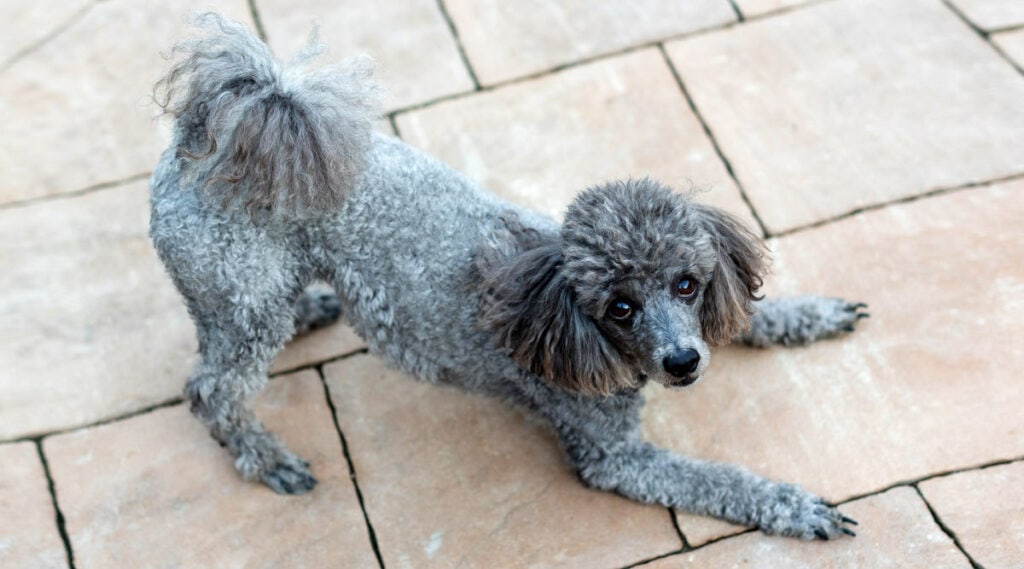
Tufted tails come in a range of shapes. The key feature is the bushy, tufted hair that appears on the end of the tail, which is common in Poodles. This look is often accentuated by how the dog is groomed, so it’s often hard to tell whether the tufted look is natural.
Examples of breeds with a tufted tail:
- Poodle
Sickle
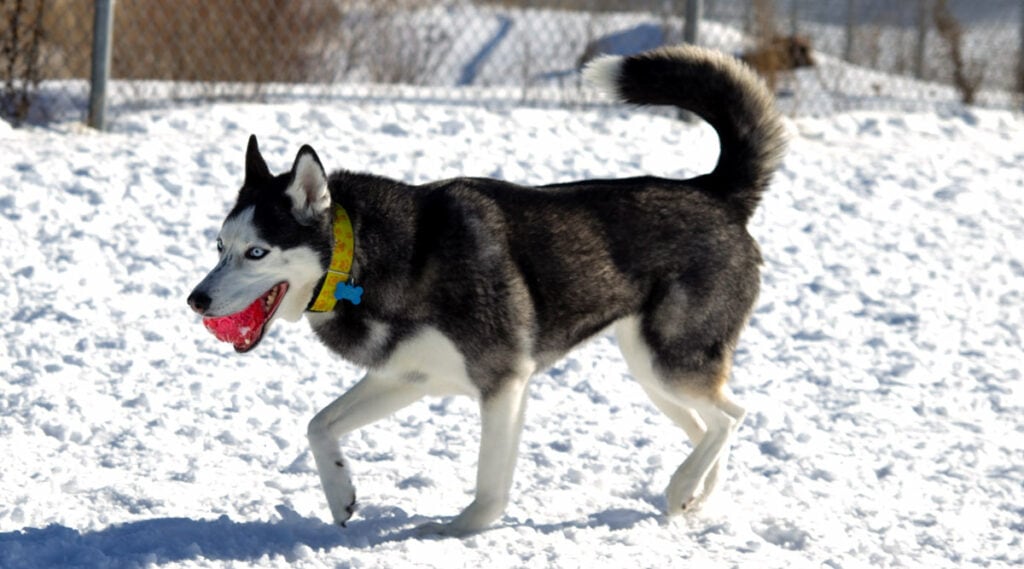
Sickle tails, as the name suggests, have a curved shape. They are held over the rear of the dog’s body, with the tail typically pointing towards the head.
Unlike curled or corkscrew tails, sickle tails don’t curve into a complete circle. The curve is shallower and the tail often has a bushy appearance. They sometimes have a fluffy appearance and are also often long tails.
Examples of breeds with a sickle tail:
- Chihuahua
- Siberian Huskies
- Malamutes
Swimmer or Otter
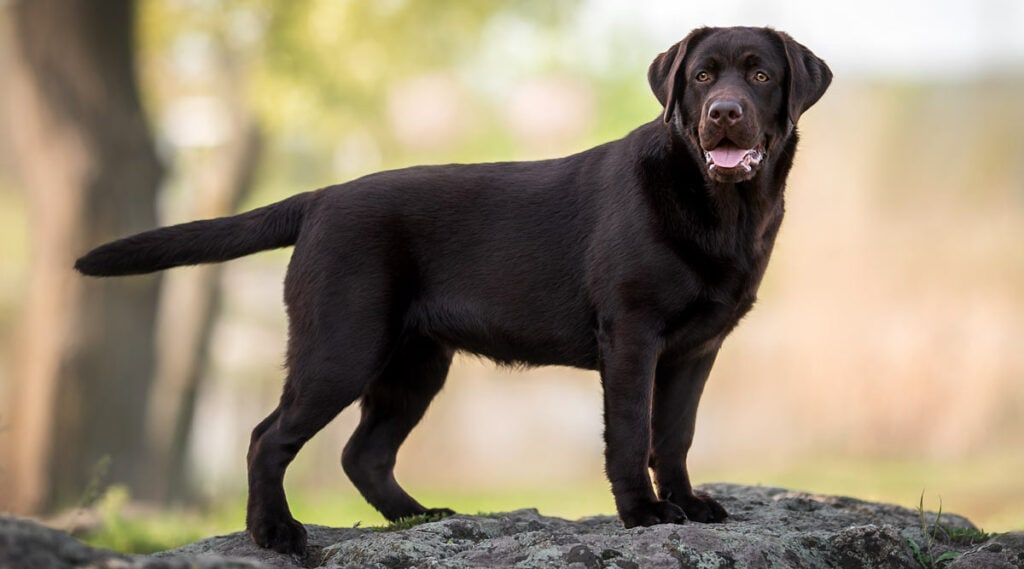
Some breeds have thick tails with a small curve, which are known as “swimmer” or “otter” tails. These tails also often have thick fur and a taper towards the end.
The thickness and shape of otter tails make them effective for steering in water, similar to a boat’s rudder. For this reason, they are most common in dog breeds that naturally like swimming.
Examples of dog breeds with a swimmer’s tail:
- Labrador retriever
- Otterhounds
Gay
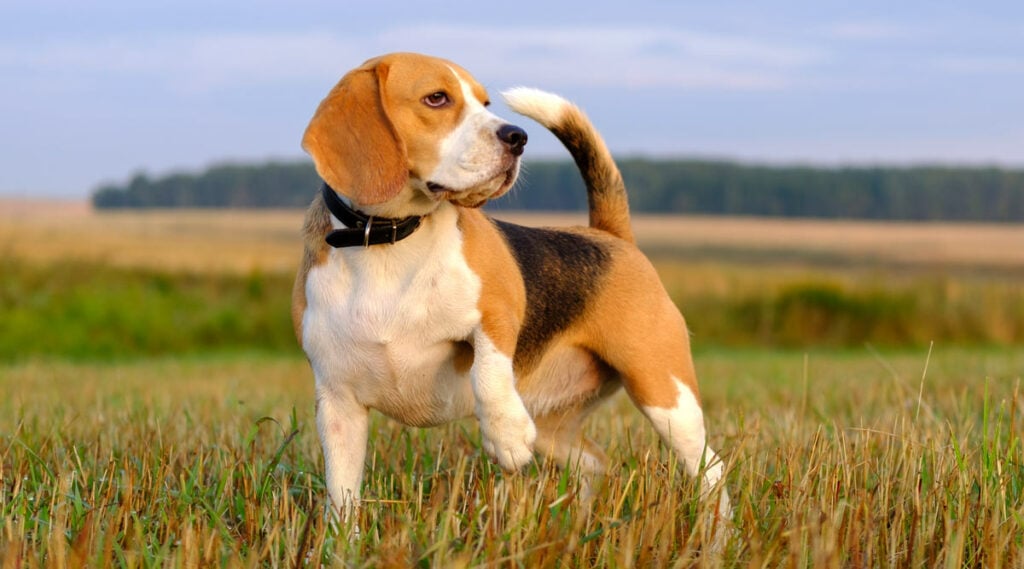
Gay tails are similar to tufted tails, but are smaller and have a shallow curve. They are typically held horizontally and lack the taper of an otter tail.
Many gay tails also have an instantly recognisable white tip. This might have evolved to make tail communication easier, as the white tip is easier for other dogs to see.
Examples of dogs with gay tails:
- Beagles
- Cavalier King Charles Spaniel
Whip or Carrot
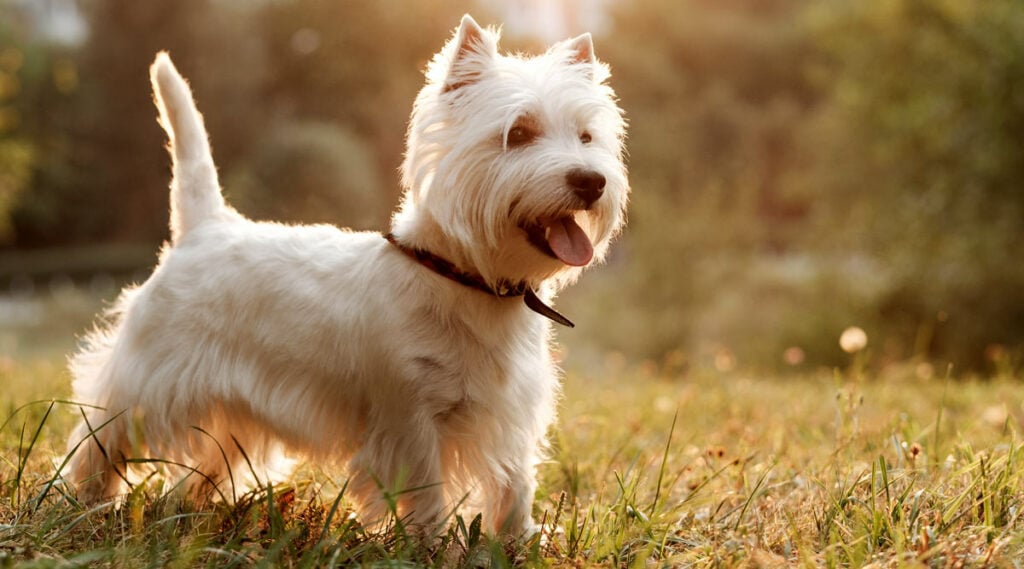
Carrot tails are relatively short, and are thinner at the tip than they are at the base (hence the carrot name!) These tails are most common in terrier breeds.
Compared to other types of tails, carrot tails are closest to otter tails, although they are typically thinner and lack thick fur.
Examples of dog breeds with carrot tails:
- Dachshunds
- Border terriers
- English setters
Saber
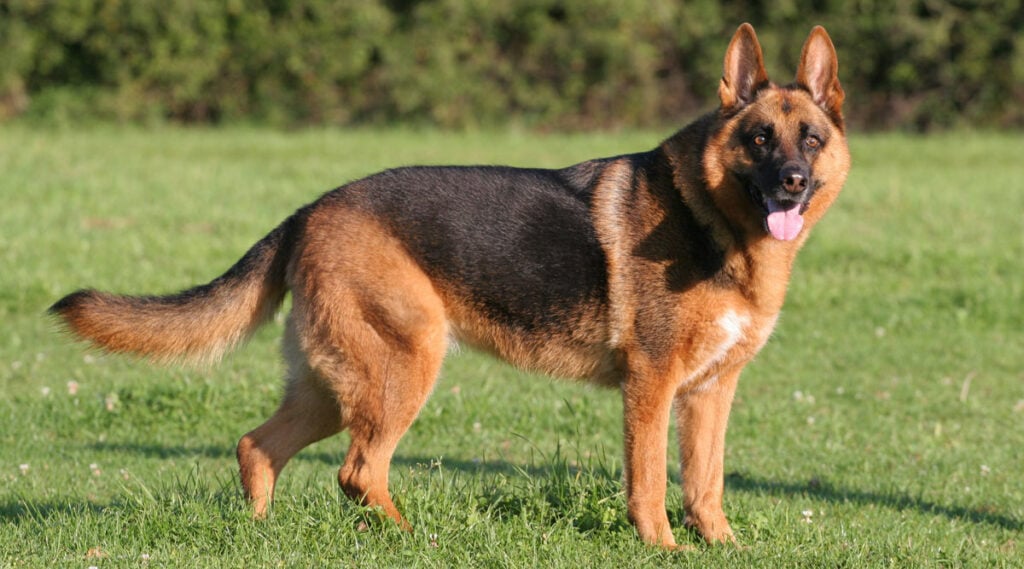
Saber tails have a small curve, similar to sickle tails. The main difference is that saber tails tend to hang down towards the ground, rather than upright over the dog’s back.
Examples of dog breeds with saber tails:
- German shepherds
- Belgian malinois
- Border collies
Docked Tails And Why They Are Unethical
Tail docking is the practice of removing all or part of a dog’s tail. It is often performed for aesthetic reasons, although sometimes the stated goal is to prevent future injury.
At The Dog Clinic, we aim to promote positive and ethical dog ownership. That’s why we are firmly against tail docking. The only exception is if tail docking is required due to a medical issue (such as a severely broken tail or happy tail syndrome) and is performed by a vet under anaesthetic.
There are several reasons why we believe that tail docking is unethical:
- Tail docking involves crushing and cutting the bones and nerves in the tail without anaesthetic. Unsurprisingly, this is immensely painful for the puppy.
- There is evidence that tail docking can cause chronic pain for the rest of the dog’s life.
- Tail docking deprives dogs have a vital method of communication.
The good news is that many countries are starting to ban tail docking. For example, tail docking is classed as mutilation according to UK law, and is only allowed in a small number of circumstances.
Can You Tell Dog Breed by Tail?
A dog’s tail can certainly give you a clue about their ancestry if they are a mixed breed. For example, dogs with tufted tails may have poodle in their gene pool, while those with a carrot tail are likely to descend from a West Highland terrier.
With that said, tail types are not a precise method for finding out about your dog’s breed. If you really want to know your dog’s breed, then you’ll need a canine DNA test for more accurate results.
Summary
Dog tails come in a range of shapes and sizes. From stub-like bob tails to flowing sabre tails, your dog’s furry appendage can give you hints about their ancestry.
Tails are not just for show though! They are essential for both balance and communication. To find out more, read our guide to why dogs have tails.
